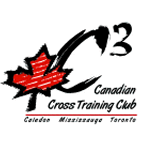For most of you, the racing season is winding down and the realities of cold winter months are creeping into your head, but those months are the most important training period you have. The aerobic foundation you lay during this time sets the tone for how high you will peak-and by how much you will PR-during the summer. There are six simple steps that will help you build the aerobic base to run faster, stronger and injury-free so you have your most successful season next summer.
Step 1: Take two weeks off
That's right, the first step in building a big aerobic base is to do absolutely nothing. Take the time to focus on other things in your life. Whatever you do, stay out of your running shoes (unless you are using them to mow the lawn).
You need a mental and a physical break at this point in the season. When the two weeks are up, you'll be ready to go with a fresh new attitude. The time off can also be a time of reflection. The better you can evaluate your strengths and weaknesses, look at the upcoming season, and put things in perspective, the more focused and directed you will feel with your training.
Step 2: Increase the mileage slowly
Now it is time for the nitty-gritty. How much should you run? The answer depends on many factors: How much have you run in the past? How much can you run with your work and life schedule? Do you want to focus more on your cycling and swimming?
All of these questions determine how much you should run during the base-building phase. Whatever mileage you begin with, be sure to build slowly. Increase your long run by no more than one to two miles every other week. Build up for at least eight weeks toallow your body to get used to the mileage before adding in any intensity. When you begin the Tempo runs, start at 20 to 40 seconds slower than your last 10K field test. You can approximate this pace, but it's best to do a test.
Step 3: Incorporate drills and strides
Since mileage will generally be lower during the early parts of your base-building phase, incorporate some drill work after your runs. Pick three or four simple drills to master, such as power skips, fast high knees, skipping A's, and bounds. Be sure to emphasize technique, not volume.
Incorporate strides into the drill sessions. Strides during your base-building phase serve a few purposes. They maintain your speed so that when you are ready to jump on the track and start running fast-repeats, the turnover is there. Strides are also a good way to improve form. Try to "run pretty," landing on the balls of your feet with good arm motion. Keep your head up and look down the road, or track, in front of you. Stay relaxed and get into a good rhythm. Four to eight strides of 15 to 20 seconds each after a run should do the trick. Start slowly to work out the kinks. By the last few strides of each session, you should be near your maximum speed. By doing drills and strides, not only are you improving your biomechanics so you run more efficiently, you're also training yourself to maintain your leg turnover, so when you head to the track come summertime, you're (literally) one step ahead of the game.
Step 4: Cross-training
Get out there and do something adventurous. Take a long hike instead of a long run. Go snowshoeing or rock climbing. Do anything except what you were "supposed" to do that day. Even professional athletes do this sort of thing during their down time. Keep it active and try to keep it aerobic, but most importantly, keep it fun.
Step 5: Take a day off
Don't train, and especially don't run every day. Take at least one day off per week. Relax and enjoy the extra time to nap or catch a movie. You'll be thanking yourself come summertime!
Step 6: Use the knowledge
It's OK to admit that you don't know everything about training. Get ideas from other people and coaches. Keep in mind that you are an individual; your training should reflect that fact. Don't get sucked into doing what everyone else is doing. Take some time and map out a plan for yourself. Get the advice of a professional coach and tell him or her your story. Whatever you do, take the time to think it through. Getting the most out of yourself is all about training smarter, not harder.
Subscribe to:
Post Comments (Atom)








No comments:
Post a Comment